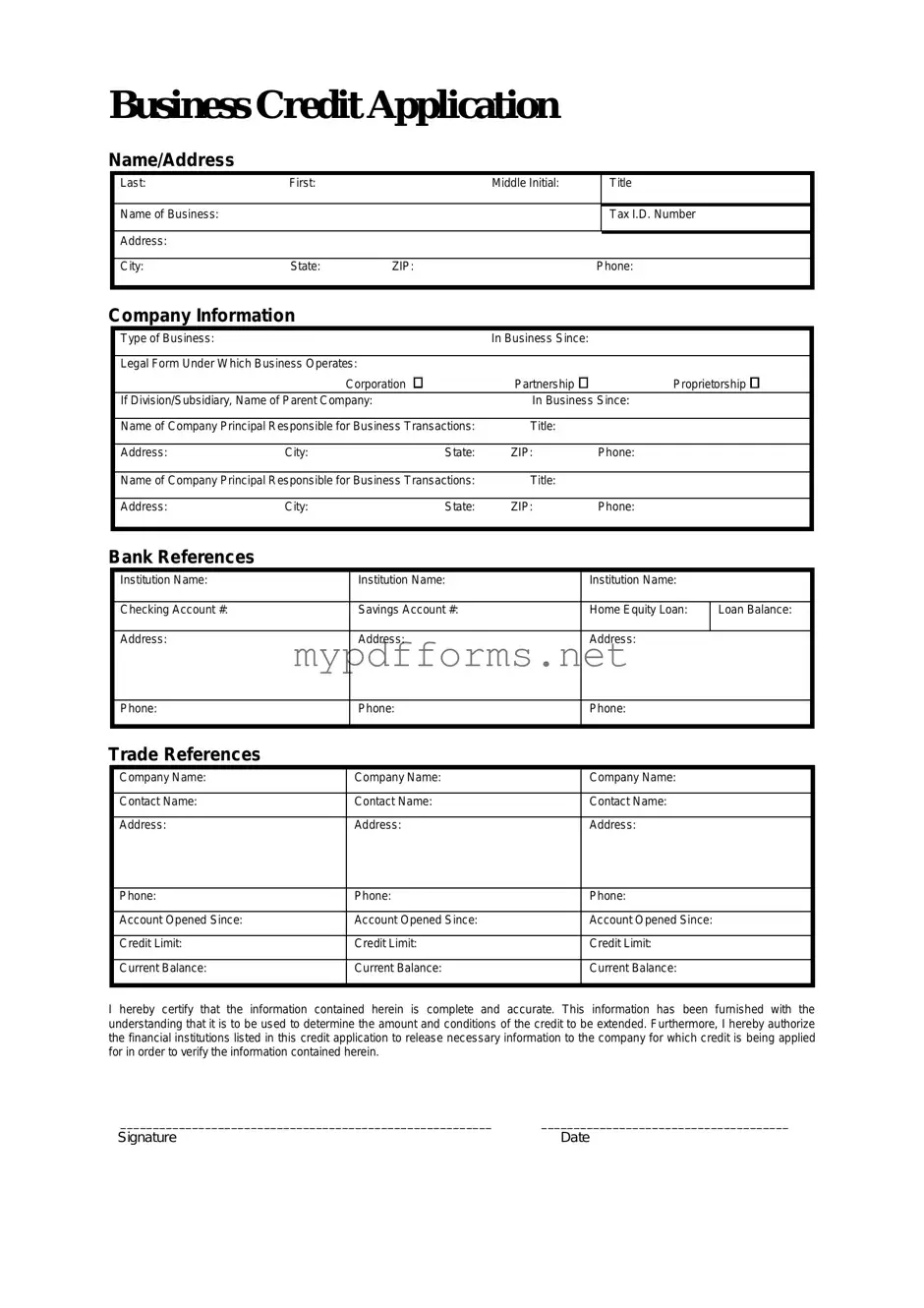The Business Loan Application is a document that serves a similar purpose to the Business Credit Application form. Both forms are designed to gather essential information about a business seeking financial assistance. The loan application typically includes details about the company’s financial history, creditworthiness, and the purpose of the loan. Just like the credit application, it requires information about the business owner, including personal guarantees and assets, which helps lenders assess risk and make informed decisions.
The Vendor Credit Application is another document closely related to the Business Credit Application. This form is used by businesses when applying for credit from suppliers or vendors. It collects similar information regarding the business’s credit history, financial stability, and payment terms. Both applications aim to establish trust and ensure that the business can fulfill its financial obligations, making them vital for maintaining healthy vendor relationships.
A Personal Credit Application is often used by individuals seeking credit for personal use, such as loans or credit cards. While it focuses on personal financial information, it shares a common goal with the Business Credit Application: evaluating creditworthiness. Both forms require detailed information about income, debts, and credit history, allowing lenders to gauge the applicant’s ability to repay the borrowed amount.
As various business forms play essential roles in financial transactions, one key aspect often overlooked is the proper handling of unclaimed funds. The Ohio Unclaimed form is specifically designed to assist companies in reporting unclaimed assets, ensuring that they comply with state regulations while also aiding individuals in recovering their lost funds.
The Commercial Lease Application is another document that shares similarities with the Business Credit Application. When a business seeks to rent commercial space, landlords often require this application to assess the tenant’s financial stability. Like the credit application, it includes financial disclosures, business history, and references, helping landlords determine if the business can meet lease obligations.
The Business Partnership Agreement is a document that outlines the terms of a partnership between two or more business entities. While it serves a different purpose, it often requires financial disclosures similar to those found in a Business Credit Application. Both documents aim to clarify financial responsibilities and expectations, ensuring that all parties involved understand their roles and obligations.
The Equipment Financing Application is used by businesses looking to acquire equipment through financing. This application gathers information about the business’s financial health and its ability to repay the financing. Like the Business Credit Application, it assesses the risk involved in lending money, focusing on the business’s cash flow and credit history to make informed lending decisions.
The Merchant Cash Advance Application is another document that resembles the Business Credit Application. It allows businesses to apply for an advance based on future credit card sales. Both applications require financial information, including revenue and creditworthiness, to evaluate the business's capacity to repay the advance. This similarity lies in the focus on the business's financial performance and the assessment of risk involved.
The Business Insurance Application is a document that businesses complete to obtain insurance coverage. While it primarily focuses on risk assessment for insurance purposes, it shares some similarities with the Business Credit Application. Both documents require detailed financial information, business history, and operational data to help underwriters evaluate the risk associated with insuring the business.
The Business Registration Application is essential for legally establishing a business entity. While its primary purpose is to register the business with the state, it often requires financial disclosures similar to those in a Business Credit Application. Both forms aim to provide a clear picture of the business's operations, ownership, and financial status, ensuring compliance with legal requirements and helping to establish credibility.
Finally, the SBA Loan Application is used when businesses seek loans backed by the Small Business Administration. This application is similar to the Business Credit Application in that it gathers comprehensive financial information and business history. Both documents are designed to help lenders assess the viability of the business and its ability to repay the loan, making them critical tools in the financing process.
